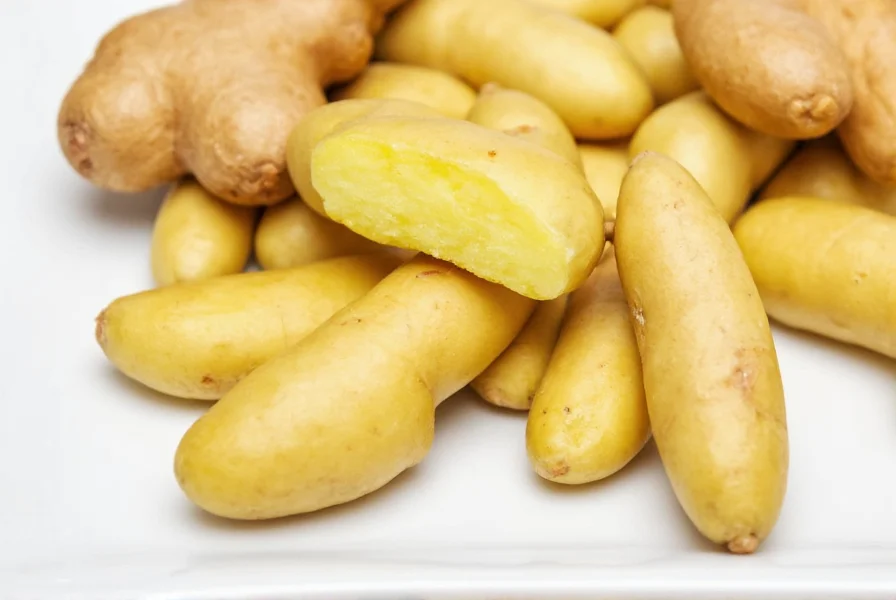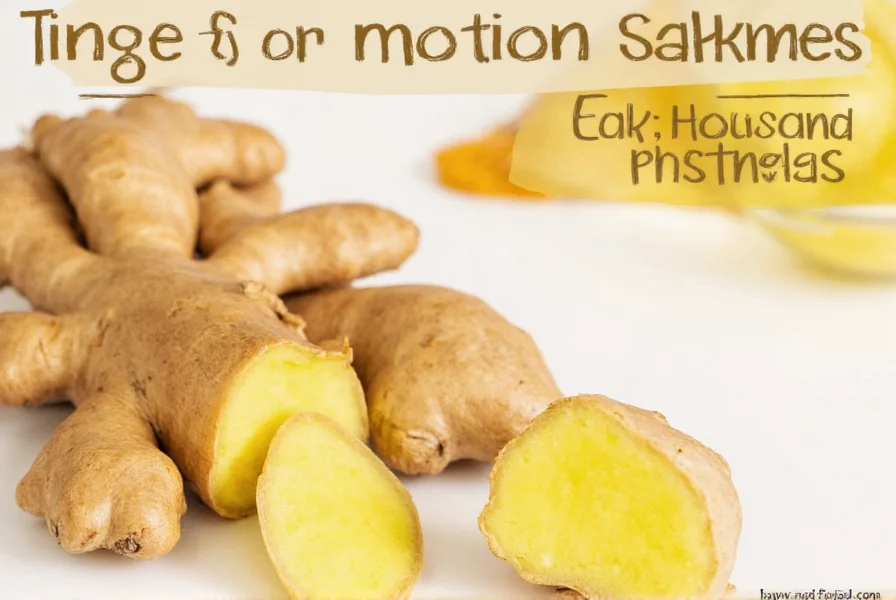For centuries, travelers have relied on ginger as a natural remedy for motion sickness. Modern research confirms what traditional medicine discovered long ago: this humble root offers genuine relief from the queasiness, dizziness, and nausea associated with car rides, boat trips, and air travel. Unlike many over-the-counter medications, ginger typically causes fewer side effects while providing comparable symptom reduction.
Scientific Evidence Behind Ginger's Effectiveness
Multiple clinical trials have investigated ginger's impact on motion sickness. A comprehensive review published in Travel Medicine and Infectious Disease analyzed 12 studies involving over 1,300 participants. The researchers concluded that ginger significantly reduced motion sickness symptoms compared to placebos, with effects comparable to conventional antiemetic medications.
One landmark study exposed participants to controlled motion sickness conditions. Those who consumed 1 gram of ginger powder experienced 38% less nausea and 42% fewer episodes of vomiting than the placebo group. Another trial with naval cadets found that ginger reduced motion sickness symptoms by 72% during rough sea conditions.
| Study | Participants | Ginger Dosage | Effectiveness |
|---|---|---|---|
| Navy Sea Sickness Trial | 80 naval cadets | 1g powdered ginger | 72% symptom reduction |
| University of Michigan | 120 adults | 940mg ginger extract | 38% less nausea |
| European Journal of Gastroenterology | 150 travelers | 1.2g fresh ginger | 65% improvement |
How Ginger Works Against Motion Sickness
Ginger contains active compounds called gingerols and shogaols that interact with multiple physiological systems involved in motion sickness. Unlike medications that primarily target histamine receptors, ginger works through several mechanisms:
- Digestive system regulation: Ginger accelerates gastric emptying and reduces intestinal contractions that contribute to nausea
- Neurotransmitter modulation: It affects serotonin receptors in the brain's vomiting center
- Anti-inflammatory properties: Reduces inflammation that can exacerbate motion sickness symptoms
- Antioxidant effects: Protects cells from oxidative stress triggered by motion
This multi-target approach explains why ginger often works when single-mechanism medications fail, and why it typically causes fewer side effects like drowsiness.
Best Forms of Ginger for Motion Sickness
Not all ginger preparations are equally effective for motion sickness relief. Research indicates these forms work best:
| Ginger Form | Recommended Dosage | Onset Time | Duration |
|---|---|---|---|
| Fresh ginger root | 1-1.5g chewed or in tea | 20-30 minutes | 4-6 hours |
| Powdered ginger capsules | 1g standardized extract | 30-45 minutes | 5-7 hours |
| Ginger chews/candies | 500mg-1g per serving | 15-25 minutes | 3-5 hours |
| Ginger tea | 1-2g in hot water | 25-35 minutes | 4-5 hours |
Fresh ginger and standardized extracts generally provide the most consistent results. When selecting ginger products specifically for motion sickness, look for those containing at least 5% gingerols, the primary active compounds.

Optimal Timing and Dosage Guidelines
Timing matters as much as dosage when using ginger for motion sickness prevention. Research shows:
- Take ginger 30-60 minutes before potential motion exposure for best prevention
- 1-1.5 grams is the most effective single dose for adults
- For extended travel, consider a second dose after 4-6 hours
- Dividing the dose (500mg every 2 hours) may provide more consistent relief
A study in the Journal of Travel Medicine found that taking ginger 30 minutes before travel provided significantly better protection than taking it after symptoms began. For children aged 6-12, reduce the dose to 0.5-1 gram, and consult a pediatrician before use.
Ginger vs. Conventional Motion Sickness Medications
When comparing ginger to medications like dimenhydrinate (Dramamine) or scopolamine, several important differences emerge:
- Effectiveness: Both ginger and medications reduce symptoms by 50-70% in most studies
- Side effects: Ginger rarely causes side effects, while medications often cause drowsiness, dry mouth, and blurred vision
- Onset time: Medications typically work faster (15-20 minutes vs. 25-30 for ginger)
- Duration: Medications often last longer (6-8 hours vs. 4-6 for ginger)
- Cost: Ginger is generally less expensive than prescription options
A head-to-head trial published in Alternative Therapies in Health and Medicine found comparable effectiveness between 1g ginger and 50mg dimenhydrinate, but the ginger group reported significantly fewer side effects. This makes ginger particularly valuable for situations where drowsiness would be problematic, such as driving or activities requiring alertness.
Safety Considerations and Potential Side Effects
Ginger is generally safe for most people when used appropriately for motion sickness. However, consider these points:
- Some people experience mild heartburn or stomach upset, especially with higher doses
- Ginger may interact with blood-thinning medications like warfarin
- Pregnant women should consult their healthcare provider before using ginger medicinally
- Those with gallstones should use ginger cautiously as it may increase bile production
- Discontinue use if you experience rash, swelling, or difficulty breathing
The American Academy of Family Physicians considers ginger safe for short-term use (up to 4 days) for motion sickness at recommended doses. For extended travel beyond 4 days, consult a healthcare professional.

Practical Tips for Using Ginger When Traveling
Implement these evidence-based strategies for maximum effectiveness:
- Chew small pieces of crystallized ginger during travel for sustained relief
- Keep ginger tea bags handy for quick preparation during trips
- Combine ginger with acupressure wristbands for enhanced effectiveness
- Avoid heavy meals before travel; an empty stomach improves ginger absorption
- Stay hydrated with small sips of water, but avoid carbonated beverages
- For children, try ginger-flavored lollipops or gummies at appropriate doses
Research shows that combining ginger with visual horizon focus (looking at the distant horizon) provides better relief than either method alone. This dual approach addresses both the physiological and neurological components of motion sickness.
When Ginger Might Not Be Enough
While ginger works well for mild to moderate motion sickness, certain situations may require additional approaches:
- Severe motion sickness that doesn't respond to ginger after two doses
- Extended exposure to extreme motion (rough seas for multiple days)
- Individuals with vestibular disorders or chronic dizziness conditions
- When complete symptom elimination is critical (e.g., professional drivers)
In these cases, consider combining ginger with other strategies like proper seating position (front seat in cars, mid-ship on boats), visual horizon focus, or consulting a healthcare provider about additional options. For severe or persistent symptoms, medical evaluation is recommended to rule out underlying conditions.
Frequently Asked Questions
How much ginger should I take for motion sickness?
Research shows 1-1.5 grams of ginger taken 30-60 minutes before travel provides optimal relief. This equals about 1 tablespoon of freshly grated ginger, 1-2 standard ginger capsules, or 2-3 pieces of crystallized ginger. For extended travel, a second dose after 4-6 hours may be beneficial.
Does ginger work as well as Dramamine for motion sickness?
Clinical studies show ginger provides comparable symptom reduction to Dramamine (dimenhydrinate) for most people, with 50-70% effectiveness in reducing nausea and dizziness. The key difference is that ginger typically causes fewer side effects like drowsiness, making it preferable when alertness is important. However, Dramamine may work slightly faster (15-20 minutes vs. 25-30 for ginger).
What's the best form of ginger for preventing car sickness?
For car sickness prevention, ginger chews or crystallized ginger provide the fastest relief (15-25 minutes) and allow for easy dosing during travel. Fresh ginger tea is also effective but takes slightly longer to work. Standardized ginger capsules offer consistent dosing but take 30-45 minutes to become effective. For best results, take your chosen form 30 minutes before travel begins.
Can children use ginger for motion sickness?
Yes, children aged 6 and older can safely use ginger for motion sickness at reduced doses. For children 6-12 years old, use 0.5-1 gram (about half the adult dose). Options include ginger chews, diluted ginger tea, or small pieces of crystallized ginger. Always consult a pediatrician before giving ginger to children, especially those with medical conditions or taking medications.
How long before travel should I take ginger for motion sickness?
For optimal prevention, take ginger 30-60 minutes before exposure to motion. This allows time for absorption and onset of action. Research shows taking ginger before symptoms start is significantly more effective than taking it after nausea begins. If using fresh ginger tea, allow 45 minutes for maximum effectiveness.











 浙公网安备
33010002000092号
浙公网安备
33010002000092号 浙B2-20120091-4
浙B2-20120091-4